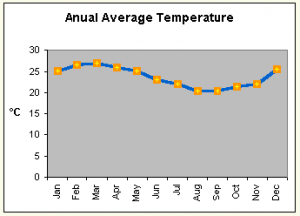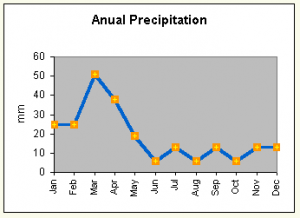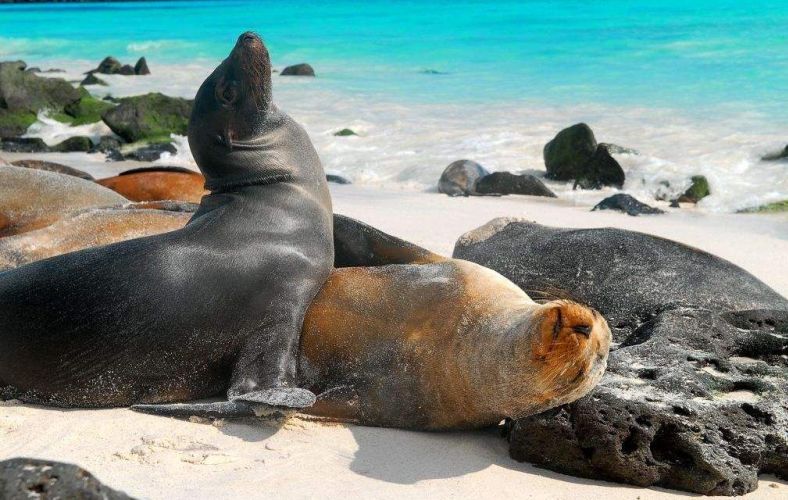Climate and Precipitation in the Galapagos Islands
 Although located on the Equator Line, the Galapagos Islands are not always humid and hot as other equatorial regions, due to its location on the Pacific dry area, where temperatures keep low par of the year by the influence of the Humboldt cold current coming from the Antarctica. This very particular air cooling phenomena, together with the Southeast Trade winds and occasionally the Niño influence, produce two climatic seasons in the year. The rainy season from January to May, distinguishes itself by hot temperatures between 23°C (73° F) and 27°C (80°F) on sunny days. The ocean is warmer and quite calm. This season can present rainy periods, which are generally scarce, but there could be years which present excessive rain, like the ones provoked by the El Niño phenomenon.
Although located on the Equator Line, the Galapagos Islands are not always humid and hot as other equatorial regions, due to its location on the Pacific dry area, where temperatures keep low par of the year by the influence of the Humboldt cold current coming from the Antarctica. This very particular air cooling phenomena, together with the Southeast Trade winds and occasionally the Niño influence, produce two climatic seasons in the year. The rainy season from January to May, distinguishes itself by hot temperatures between 23°C (73° F) and 27°C (80°F) on sunny days. The ocean is warmer and quite calm. This season can present rainy periods, which are generally scarce, but there could be years which present excessive rain, like the ones provoked by the El Niño phenomenon.
 The cold season from June to December, with temperatures that decrease to at least 19C, is mainly provoked by the cold Humboldt current. The cold water makes the air temperature descend, bringing a rough wind with a wet mist and presents cloudy skies for several days. The cold season is generally dry, although a slight drizzle is present on high areas, which keeps them always humid. The result of this is that 7 different vegetation areas can be found on the bigger islands with altitudes higher than 500m, and each one of them with their own micro climate. The southern currents also bring large quantities of plankton, which together with cold water, provoke a distinct increase in marine life.
The cold season from June to December, with temperatures that decrease to at least 19C, is mainly provoked by the cold Humboldt current. The cold water makes the air temperature descend, bringing a rough wind with a wet mist and presents cloudy skies for several days. The cold season is generally dry, although a slight drizzle is present on high areas, which keeps them always humid. The result of this is that 7 different vegetation areas can be found on the bigger islands with altitudes higher than 500m, and each one of them with their own micro climate. The southern currents also bring large quantities of plankton, which together with cold water, provoke a distinct increase in marine life.
Reciente
- Islas Galápagos tiene el Primer Transporte Marítimo Eléctrico Solar “Catamarán”
- The Galapagos Islands have the most Hummer Sharks in the world
- Las Islas Galápagos tiene la Mayor Concentración de Tiburones Martillo del Mundo
- New Galapagos Giant tortoise species identified
- Climate and Precipitation in the Galapagos Islands
Términos Populares
Aeropuerto conservacion Darwin Deals Ecuador ekwador Energia energía eólica equador Equipo Evolution Fernandina Fly Galapagos Genovesa geografica Geographic Guayaquil Historia Information Isabela Island Islands Islas Isla Santa Cruz location medio ambiente Puerto Ayora Quito reciclaje Recycling renovable SailBoat San Cristobal Santa María Tour Tourist Tours Travel Trip Tsunami Turismo Turista Ubicacion VisitantesAnunciantes









